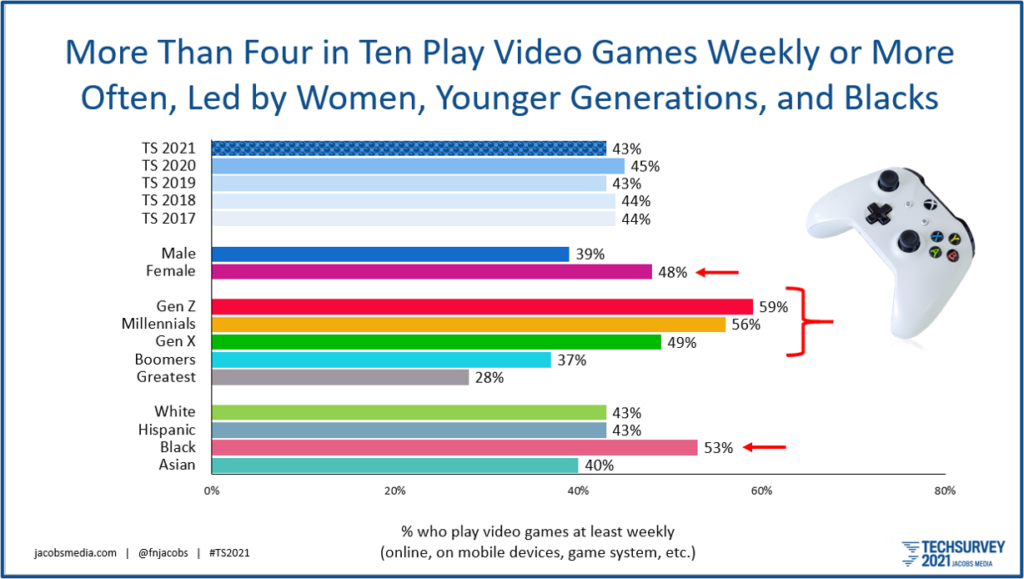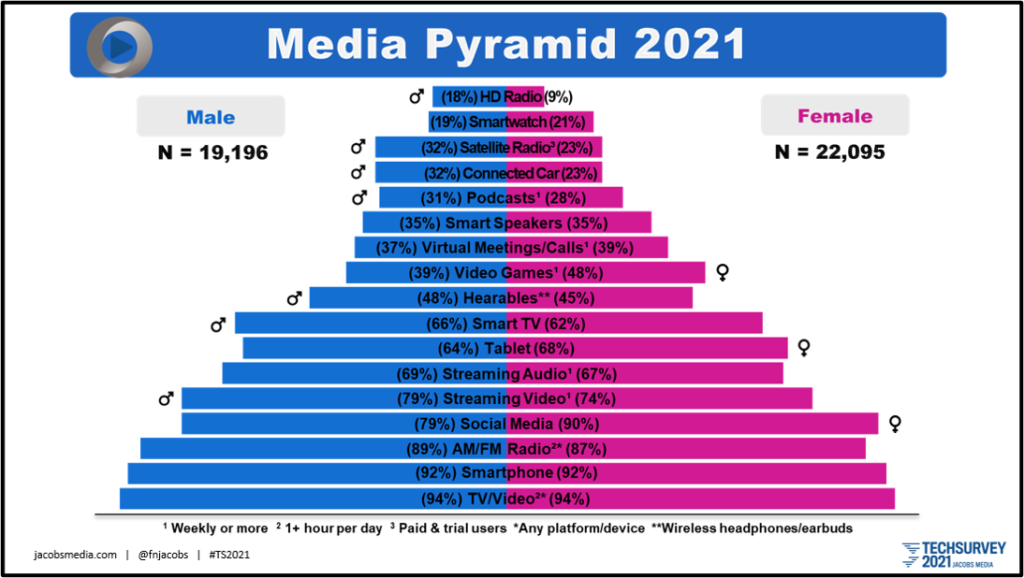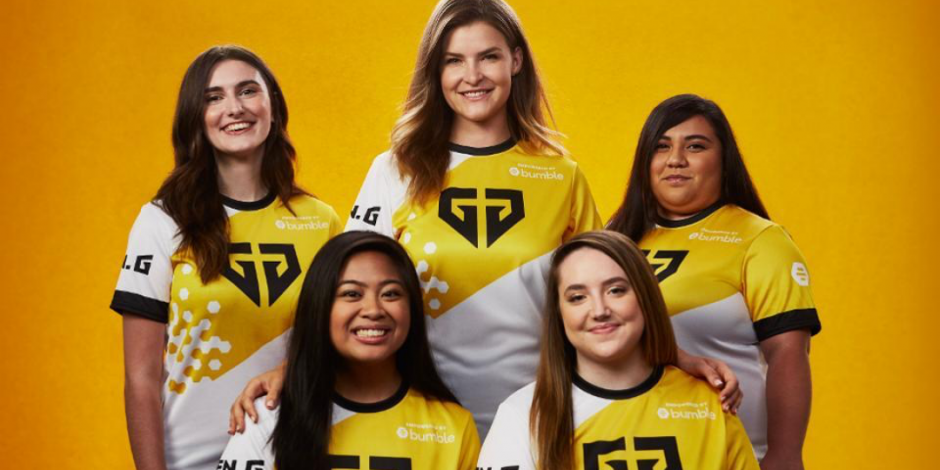
Next week, I’m honored to present a fast-moving executive summary of Techsurvey 2021 at Joel Denver’s AllAccess Audio Summit. There’s some great data to share with you, and I’m looking forward to your reactions to our main takeaways.
Every year, I get the same question:
What surprised you in this year’s survey?
Most years, the rise and fall of gadget use and media habits tends to be incremental. But in last year’s study, we saw the continued rise of smart speaker ownership, as well as meteoric growth for Disney+, a streaming platform that was less than two months old when we went into the field.
In our 2020 study, we also asked about “hearables” for the first time – Bluetooth, wireless headphone ear buds and similar devices. We were amazed to learn that four in ten of our radio-centric respondents already purchased these audio listening gadgets.
But this new study is off the charts, thanks to the pandemic. The previous study was fielded in January/February of 2020 – just before our lives were turned upside down by COVID.
Techsurvey 2021 is a great reflection of what our lives look like now, and that’s why we subtitled this new study, “Radio in the Year of COVID.”
A lot has happened – a big boost for video streaming platforms, plunging time spent in cars, an explosion of e-commerce, and strong signs radio’s emotional support has been well-received.
But perhaps another surprise is the continued strength of video game play – among women.
Now in our surveys, the demographics run older. In many ways, it’s the nature of broadcast radio and its aging process. In spite of the fact many have spent more time in their homes over the past year, our weekly level of video game play has remained consistent. In most years, we show a little higher than four in ten playing games on devices like controllers, computers, phones, and tablets. This year’s survey was no different.
But women profile higher than men, defying conventional wisdom about who’s hunkered down playing video games in their basements. The stereotype holds up better for young people. And Blacks profile higher, too.

But it is the female factor that stands out, creating most of the “Seriously?” responses. We’ve seen this same phenomenon in past Techsurveys, and my explanation is that while men may be playing games like Fortnight, Grand Theft Auto, and Madden NFL 21 on controllers and computers, their female counterparts are playing Words With Friends, Angry Birds, and Kandy Krush on their phones.
But it turns out I’m guilty of stereotyping, too. While women heavily favor single-player mode games (that’s the case for more than eight in ten players), their participation in multi-player/team games like Fortnight (34%) and Call of Duty (36%) is significant, according to Statista.
Writing in The Drum, Anzu’s Natalia Vasilyeva lists key factoids about gaming and women:
- In Asia (the biggest gaming market), 38% of the 1.33 billion gamers are women.
- In the U.S., females comprise more than four in ten gamers (looking remarkably similar to Techsurvey results).
- Across all platforms – PC, console, mobile – women comprise 46% of gamers.
Those are impressive numbers, and they suggest many tech barriers are breaking down. Every year in Techsurvey, I show what has become known as the “Venus & Mars Pyramid,” illustrating media usage habits by gender.

Yes, there are differences – designated by the male/female symbols. Men are more apt to stream video and listen to podcasts. But women are more “social” and yes, play video games.
Natalia Vasilyeva reminds us that seven in ten moms (71%) aged 25-54 are gamers, according to Activision Blizzard research. You have to wonder whether those levels didn’t rise during stay-at-home orders last year when so many mothers were cooped up at home with their kids.
And not surprisingly, women are making their presence known in eSports, where nearly three in ten are fans. All-female teams are becoming more common, too. Pictured is Gen.G’s Fortnite team:

This story about the counter-intuitive nature of video game demographics should be a reminder to programmers and marketers about the danger of demographic stereotypes, especially as “expanding the tent” – that is, growing the cume – becomes even more mission critical as time goes on.
Boomers listen to podcasts.
Millennials enjoy Classic Rock.
Men are doing lots of grocery shopping.
And yes, women are gamers.
We limit our potential to serve audiences and grow share when we allow cultural stereotypes to dominate our thinking.
I’ll be running down the top findings of our new Techsurvey next week at the All Access Audio Summit. It will be eye-opening.
- Media And Technology In 2025: Believe It Or Not! - April 18, 2025
- In Radio, You Just Never Know - April 17, 2025
- The Secret To Making A Great Podcast (And Great Radio) - April 16, 2025




Leave a Reply